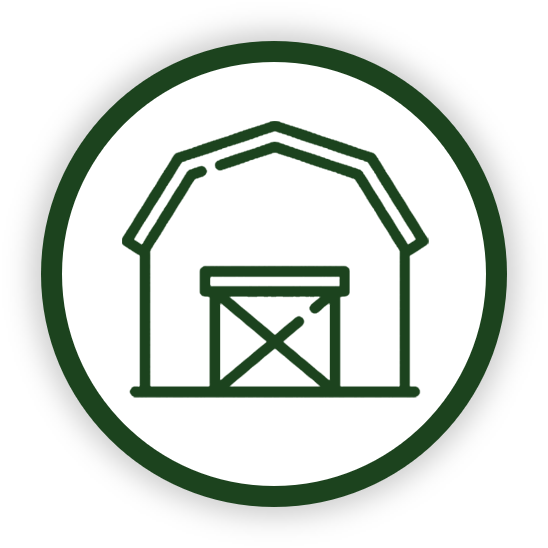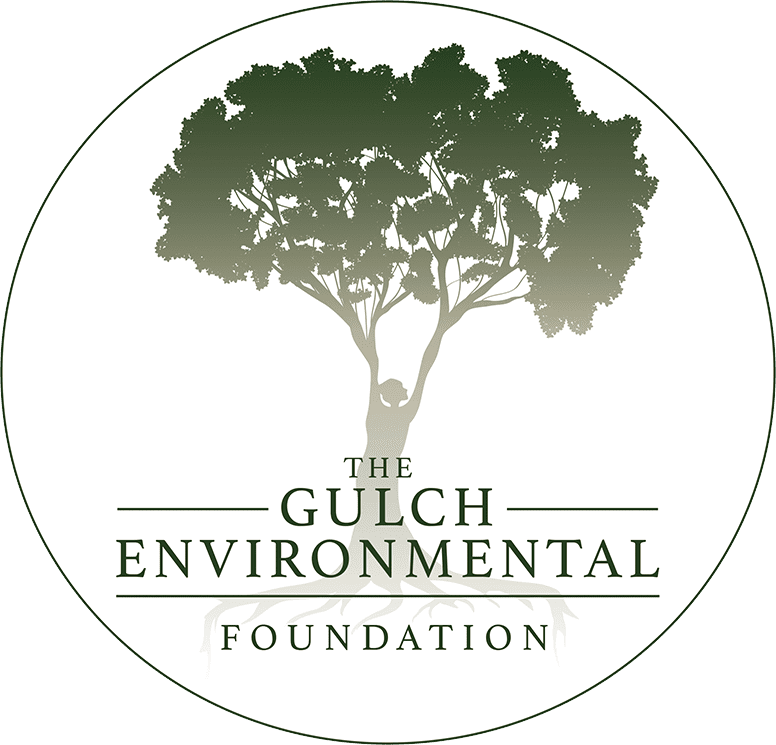2023 Q4 Impact Report
Letter from Founder and Team
Fall is a very busy time at the farm in general, and it was extra busy for us this year. The cool season cash crops and cover crops need to be planted, after harvest but before the soil temperatures get too cold for the seeds to germinate. But we also need to balance planting around soil conditions. If it rains too heavily, the soil gets saturated, and we will tear up the fields and risk getting stuck by planting in them before they are dry enough. Some early rains this season did slow planting, but luckily, being no-till our fields dried out quicker than if they were tilled. The tractor we got this year, lovingly named B.A.T.girl (for Big-Ass-Tractor) has been working great, and allows us to plant at the optimal time for getting the seeds in the ground.
Very exciting infrastructure developments, we installed a 30,000-gallon water tank as part of a water catchment system to provide irrigation to the orchard. This is crucial, as we confirmed earlier that groundwater isn’t available on our property. The remaining parts of the water catchment structure, an open-sided shed covering the tank with a solar paneled pump, will be constructed in early 2024.


And most excitingly, we got a many pieces of new equipment, discussed in more detail below. One of these is a roller/crimper , which allows us to implement a very promising method of both nutrient management and weed control. As a no-till, no-herbicide operation, management of weedy species is a challenge that requires creative solutions. The use of mulch is an effective method to suppress weedy species, but mulching at the scale of a hundred acres requires a different approach than mulching a garden. The roller/crimper allows us to meet this challenge. The roller/crimper is designed to crimp the vascular system of cover crops before their seeds have fully developed, creating a dense mulch full of nutrients and leaving their roots in the soil to secure the mulch in place. This traps many of the soil nutrients for slow release as the mulch breaks down over the season, and also smothers many of the small seeded weedy species, while allowing crops like Milo to thrive growing up through the mulch. We have planted 20 acres of barley to use as a mulch for this system, and will be planting Milo into this in the summer after the roller/crimper creates the mulch.
One of our most important donor funded activities this quarter involved collecting ongoing donations to help on the ground recovery in Maui following the devastating wildfires there. The Gulch set up a fund to collect donations for Maui, and our sister organization, Motive Power, will match these donations and send them to local on-the-ground organizations in 2024.
Our projects are working to do good on multiple fronts: carbon sequestration, regenerating soil, make food for those in need, plant diverse crops for stability in changing times, and providing habitat to support our farm as part of the larger matrix of natural systems in the region.
We could not do our work without donors. Our foundation’s administrative costs are covered through sponsorship donations, and all other donations go directly to on the ground project actions.
Summary of Q4 Activities
Our donor-funded activities are broken down into 7 main categories. The activities completed during this quarter are outlined below:

University Involvement Support/ Science Projects
- Ongoing conversations with Oklahoma State University about participating in additional research projects, speaking events with students, and other opportunities for engagement.
- Additional baseline reports from biodiversity monitoring drafted.

Diverse Planting
- Perennial:
- We continued to care for the orchard trees.
- We have also obtained approximately 50 orchard trees, both some replacements for those that didn’t survive the first year and new varieties, and are planning for the planting of those trees early in Q1 2024.
- Annual:
- Wheat: In early November, we planted 33 acres of winter wheat in the south field, adjacent to the orchard, using our brand-new No-Till Drill!

Livestock Incorporation
- Cattle: 18 steers were released onto the prairie portion of Rainmaker on July 28. The grassland was at roughly 3000-3500 lbs/acre Residual Dry Matter (RDM) when the cattle were introduced. These cattle grazed the grass down in this area to ~2000-2500lbs RDM, and were temporarily pulled off after some heavy rains in late December. Early next year some older cows will be put on the pasture, to graze it down to around 1000lbs RDM, to encourage good forb growth the following year.
- European Honeybees: We continued nearly weekly monitoring and food supplements until the honeybees went dormant in December. We then relocated the active hive to a more sheltered area, and lower to the ground, to help with heat maintenance over winter. We are also looking into planting additional wildflower areas nearby next spring.

Cover Cropping
- Cover cropping is beneficial to regenerative farming in many ways. It protects the soil from erosion. Many species replenish essential nutrients, such as nitrogen, in the soil. This year we have two cover crops planted: Native grasses and Barley.
- The deep roots from native species also help sequester carbon. Our native grass cover crop around the orchard will continue to develop around the orchard, which will help with carbon sequestration, soil stabilization and retaining water in that soil.
- This year we planted 20 acres of a barley cover crop in our east field. This was planted at nearly twice the density that would be planted at for growing grains. We also planted it during the fall, instead of during the spring as you would for grain. The intention behind this is so that in the early summer, before the barley seed has matured, we will roller/crimper this stand into a dense mulch to suppress the annual weeds. The mulch will also retain and slowly release nutrients as it decomposes over the course of the growing season. We can plant Milo into this dense thatch, right after it is crimped, and harvest the Milo in the fall.

Farm Equipment & Supplies
- We have made some major exciting additional equipment purchases this quarter: no-till drill, manure spreader, and roller/crimper. The no-till drill allows us to place the seeds into the ground at a consistent distribution and depth, even in uncultivated land. The no-till drill gives better seed-to-soil contact for crop seeds and will help assure we have a more even stand at harvest. This will complement our conservation seeder, which is still very important for grassland restoration tasks. The new manure spreader makes it much easier to get vital nutrients into the fields, as we are only using animal-based sources of fertilizer. We also got 26 tons of chicken litter to spread with it! So now we no longer need to rent the manure spreader or the no-till drill, and that means that we can do these tasks when it is the optimal time for the tasks, not just when the equipment is available.

Infrastructure
- Very exciting infrastructure development during Q4 was a source of water for our orchard and south field. We confirmed this year that groundwater is not available on the farm, and the rural water that supplies the house isn’t to be used for agriculture. So we are catching water when it falls from the sky to use later! We completed the earthwork and tank installation for a 30,000-gallon water tank. This tank is part of a water catchment system that collects water from a roof system from a cover structure and channels it into the tank using gutters. The rest of the catchment structure is already in the planning process and will likely be install in Q1 or Q2 of 2024.
- We put down sand to level the floor of the greenhouse, and covered that with concrete pavers for drainage and a flat surface for shelving.
- The herbs and flowers planted around the tiny house continue to thrive, proving nectar for our honeybees and other pollinators.

Rainmaker Farm
- Ongoing monitoring of the Barn Owl Nest boxes Rainmaker Farm is using ecological pest management.
- We have been implementing a variety of Integrated Pest Management tools to manage the weedy or invasive species in our crops. We are primarily managing Horse Weed (Erigeron canadensis) through repeated mowing.
- We have updated our website to better reflect the work that has happened at Rainmaker Farm over the past two years, and more accurately capture the current project focus of the Gulch Foundation.
Targets and Goal Tracking
We are on track to meet our targets and goals.
Next Steps
In Q1 2024 we anticipate the following:
- Planting new and replacement orchard trees
- Continue to care for the orchard, blueberries, and border trees, including watering new plantings.
- Continue developing the water catchment system.
- Explore partnering with researchers and educators at the University.
- Continue our outreach and education efforts, particularly through the ongoing publicity for the publication of a book written by our Founder about the importance of sustainability for business. Gulch team members will also be speaking at a number of events, including at the University, and soil conservation conferences.
